Introduction
Crafting a successful e-commerce strategy requires careful planning and execution. From defining overall goals to selecting the right technology, every step plays a crucial role in achieving sustained growth and a competitive edge in the bustling digital marketplace. To guide you through this process, we will explore key aspects such as market research, customer retention, financial planning, operational efficiency, and continuous improvement.
By leveraging real-world examples and industry insights, we will equip you with the knowledge and tools necessary to navigate the ever-evolving landscape of e-commerce. So, let's dive in and discover the strategies that will propel your online business to new heights.
Define Overall Goals for E-commerce
Developing a strong online business strategy starts with setting clear, focused objectives that align with your overall business aspirations. These goals could range from boosting sales figures, broadening your customer reach, to enhancing overall customer satisfaction. A clear set of objectives acts as a compass, directing all strategic moves towards the desired outcomes.
For example, when choosing items or services to provide in your online business, market demand and competition are two important factors to analyze. Tools such as Google Trends and various social media analytics can shed light on consumer interests, providing a snapshot of what is currently in demand and how these trends evolve.
Moreover, understanding the competitive landscape is essential. By studying your direct competitors, you can gain valuable insights into their product selections, pricing models, and marketing tactics. This knowledge is crucial when designing a digital business strategy that stands out in a crowded marketplace.
As we continue to observe the growth of the online business sector, with projections indicating a 64.69% increase in global revenue from 2023 to 2027, reaching a staggering $6.34 trillion, staying informed on the latest trends is non-negotiable. As an instance, the growth of artificial intelligence in online trading is transforming the manner enterprises customize shopping experiences, rendering them more individualized and pertinent to every consumer.
Staying abreast of these rapid changes and innovations, such as those highlighted at events like the NRF Retail Big Show, can provide you with the knowledge to adapt and maintain a competitive edge. By integrating these insights into your approach, you position your online business to take advantage of current consumer behaviors and upcoming trends.
Allocate Resources to Support E-commerce
Developing a successful strategy for online business requires careful allocation of resources in the financial, technological, and human areas. Establish your budget with precision, earmarking funds for essential operations such as website development, digital marketing initiatives, and comprehensive client support. Embrace cutting-edge technology solutions that streamline your online business platform, enhancing its efficiency and scalability. Chess.com's success story, managing over ten million daily chess games, exemplifies the power of robust IT infrastructure, which combines public cloud and on-premises solutions to connect a global community of over 150 million users. Similarly, Zara's integration of artificial intelligence throughout its supply chain underscores the transformative impact of advanced technologies on operational efficiency and customer satisfaction. These case studies emphasize the importance of strategic investment in technology and the value of nurturing a dedicated team capable of propelling your online business endeavors to new heights. With online business ready to take more than 20% of worldwide retail sales by 2024, now is the time to strengthen your online presence and secure a competitive edge in the thriving digital marketplace.
Align Marketing and Sales Strategies
To maximize the effectiveness of your e-commerce approach, a unified approach between marketing and sales is not just advantageous—it's essential. An effectively integrated marketing plan that is smoothly interwoven with your sales process can greatly enhance the buyer's journey. By employing search engine optimization, executing targeted digital marketing initiatives, and engaging with your audience through social media, you create a cohesive narrative. Such integration leads to uniform messaging, improved customer interactions, and ultimately, increased conversion rates.
Lemonaid Health's experience in the telehealth sector underscores the need for a strategic alignment of marketing and sales. Their challenges with a complex paid media approach highlight the pitfalls of an uncoordinated approach, which can lead to inefficient budget allocation and untapped potential in alternative, more profitable channels. In contrast, Filson's successful implementation of a customizable forecasting model stands as a testament to the power of data-driven decision-making in aligning sales and marketing efforts. Their precise online sales predictions for the 2023 Holiday Season showcase the accuracy that can be achieved through such strategic harmony.
Furthermore, the recent emergence of innovative retail technologies, like checkout-free stores using Zippin technology in Dublin Airport, emphasizes the evolving retail landscape. This emphasizes the significance of online business approaches that adjust to and take advantage of fresh advancements to effectively fulfill the requirements of consumers.
As the online shopping industry continues to grow and evolve at a rapid pace, the focus on strategic expansion becomes ever more crucial. With the competitive environment demanding innovative solutions for sales enhancement and client loyalty, companies must employ data-centric strategies. Understanding and benchmarking against average online retail conversion rates, as well as leveraging insights from industry authorities, can provide a foundation for growth.
Ultimately, by embracing a comprehensive perspective of the customer experienceâcomprehending it starts before they come to your store and extends beyond order fulfillmentâyour online business operations can flourish. A synchronized marketing and sales strategy, informed by robust data and tailored to the unique characteristics of the online trading sector, is key to driving sustainable growth and competitive advantage.
Define Target Customers and Their Needs
Forging a path to e-commerce success starts with a deep dive into understanding your audience. Zara's implementation of artificial intelligence across their operations, including engagement with consumers and supply chain management, illustrates the importance of leveraging technology to stay ahead. Their example shows that understanding your clientele goes beyond surface-level demographics. It's about predicting needs, behaviors, and preferences in real-time.
Dow Chemical's approach to customer-centricity further reinforces this. They didn't just interact with a few individuals; they engaged over 50 from various business lines, creating personas that guide their digital transformation. They understand that while digital tools are important, they're not the ultimate solution. This emphasizes the harmony between online convenience and personal interaction, a principle that is equally relevant to the field of electronic trade where client loyalty depends on tailored encounters.
Moreover, the Dublin Airport's checkout-free store, utilizing Zippin technology, echoes the importance of addressing customer pain points with innovative solutions. By removing the need for checkout lines and making shopping smooth, they cater to the specific needs of their travelers, providing valuable insights into how online business can also improve the purchasing process.
Incorporating these insights into your online business strategy can set you apart. Understand that each product you offer, each feature on your website, and each marketing message must resonate with your audience. By doing this, similar to Zara and How, you can create an online shopping experience that not only fulfills but predicts the requirements of your clients, ensuring your advantage in the thriving online marketplace.
Create a Customer Service Plan
At the core of e-commerce success lies an unwavering focus on satisfaction. To excel, you must create a service strategy that is as clear as it is comprehensive. With up to 30% of online purchases returned, your return policy should be straightforward and reassuring, allowing individuals to shop with confidence. Detailing the steps for returns, providing a choice between full refunds, partial refunds, or store credit, and potentially offering a lifetime guarantee can differentiate your service.
Embrace the digital age by integrating live chat support, which, as evidenced by the experience of Cindy from our office, can efficiently resolve client issues through a blend of AI and human interaction. An e-commerce service plan should be both reactive, to address immediate concerns, and proactive, to prevent future issues. It should ensure easy accessibility through various channels, maintain responsiveness, and be supported by knowledgeable staff well-versed in your products and policies.
Furthermore, utilizing relationship management (CRM) software allows a 360-degree perspective of client interactions, promoting enhanced service and nurturing client loyalty. This is especially important as businesses adjust to a landscape where flexibility is crucialâeliminating data silos, providing extensive self-service options desired by 81% of clients, and interacting on social media where a significant portion of adults follow brands.
Remember, the perception of your service quality may differ from reality. The truth lies in client feedback. By prioritizing these aspects, you're not just selling products; you're curating a customer experience that resonates with value and trust, inviting ongoing engagement and growth for your online business.
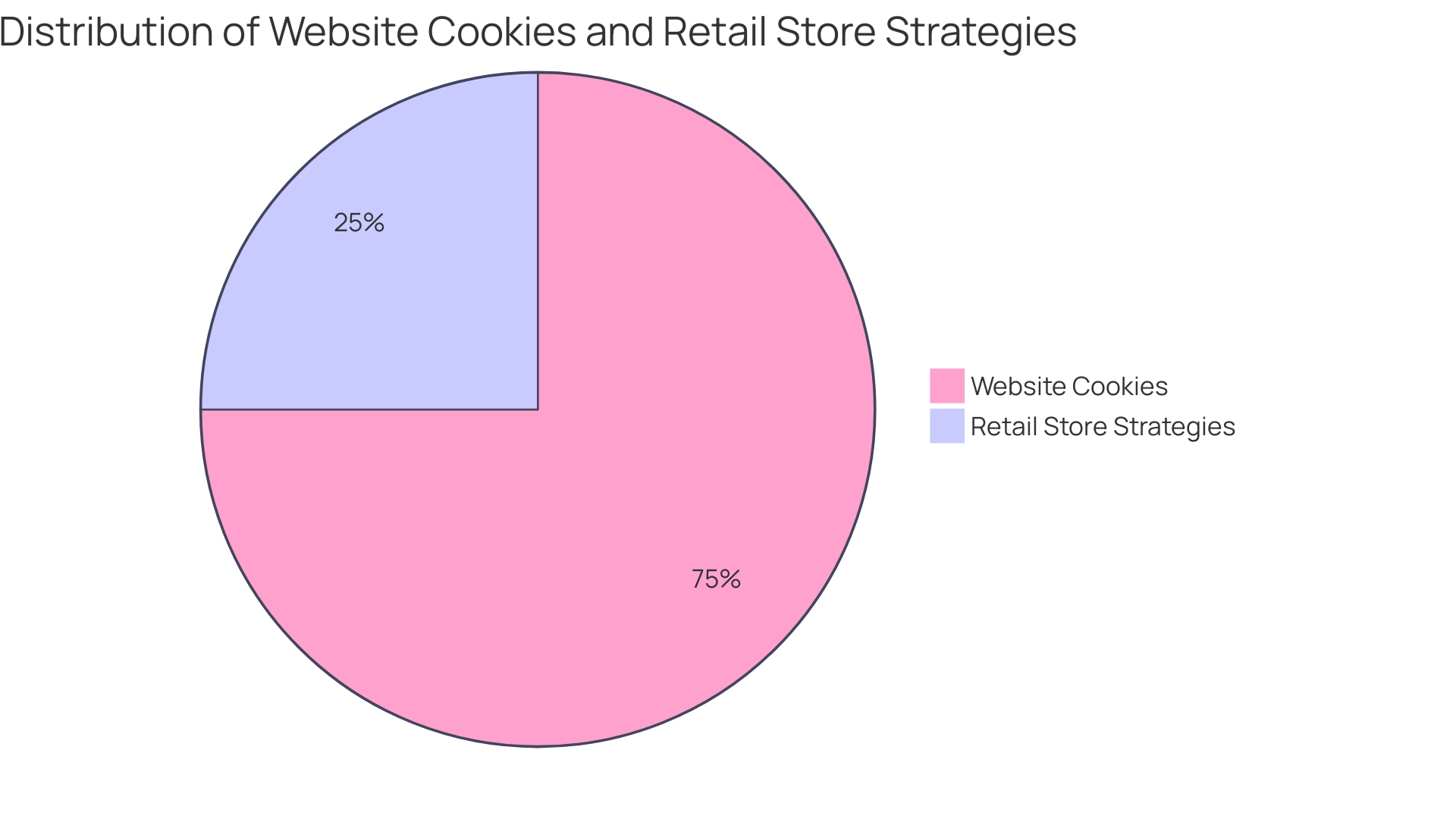
Invest in the Right Technology
Utilizing the appropriate technological tools and platforms is crucial for the smooth implementation of a strategy that aligns with your business objectives. Selecting an e-commerce platform should be done with care, ensuring it is intuitive, secure, and scalable to accommodate growth. Incorporating analytics tools is also essential for tracking website performance, understanding consumer behavior, and analyzing sales data effectively.
Furthermore, the developing technological environment provides a multitude of chances to improve the experience for consumers and optimize operations. Advancing technologies such as AI and chatbots are transforming the manner in which enterprises engage with clients and oversee their operations. For instance, companies like Chess.com have leveraged technology to scale their infrastructure and connect with a global audience, resulting in a robust community of over 150 million users. Similarly, fashion giant Zara has integrated AI across its operations, from supply chain management to user engagement, significantly improving efficiency and responsiveness.
The retail sector is witnessing a transformation driven by technology, with all-in-one platforms becoming increasingly influential. These platforms integrate diverse retail management systems into a unified interface, streamlining operations and offering a comprehensive overview. Such advancements, including the use of IoT and data analytics, are redefining the shopping experience and setting new standards for customer satisfaction. As the online business sector becomes more competitive, adopting these technological solutions can help businesses stay ahead, ensuring quick, accurate deliveries, and impeccable service as expected by today's consumers.
Identify Integration Requirements
Developing a highly effective growth strategy for online business requires a thorough exploration of the integration maze of your digital ecosystem. The harmonious link between your e-commerce platform and critical systemsâinventory management, client relationship management (CRM), payment gateways, and shipping servicesâis not just a convenience but a cornerstone of operational excellence. Such integration is the lifeblood of a streamlined, efficient operation, directly influencing client satisfaction and loyalty.
Zara, a titan in the fashion retail sector, exemplifies this with their advanced AI-driven approach, merging real-time analytics and machine learning across their business operations. The integration extends from the depths of supply chain management to the peaks of client engagement, achieved through technologies like RFID tagging. Similarly, Thrive Market's procurement strategy showcases the tangible benefits of integration. With the use of Electronic Data Interchange (EDI) advance ship notices, they update inventory in real-time, enhancing order accuracy and expectations management.
The landscape of e-commerce is rapidly evolving with technology at its forefront. Logistics, once a domain marred by human error and inefficiency, is now a testament to the prowess of automation and real-time data analytics. The unified inventory visibility concept has become an essential approach for retailers, providing an omnichannel experience to individuals that is seamless and intuitive.
In the realm of retail innovation, the recent launch of a checkout-free store in Dublin Airport, leveraging Zippin technology, stands as a testament to the simplicity and efficiency that integration can offer to the user experience. This store combines cameras and sensor-equipped shelves to detect and charge for purchases, epitomizing the potential of an integrated, frictionless shopping environment.
The integration of ERP systems into your online business strategy is a multi-step journey that starts with a thorough examination of your existing processes to identify inefficiencies, followed by careful planning and implementation. The goal is to create a cohesive system that not only addresses current needs but is also adaptable to future demands.
With the right tools and platforms, integration doesn't have to be a daunting task. It's a chance to redefine the online business landscape, guaranteeing that every aspect of your digital infrastructure works together in harmony, delivering a symphony of efficiency and customer delight.
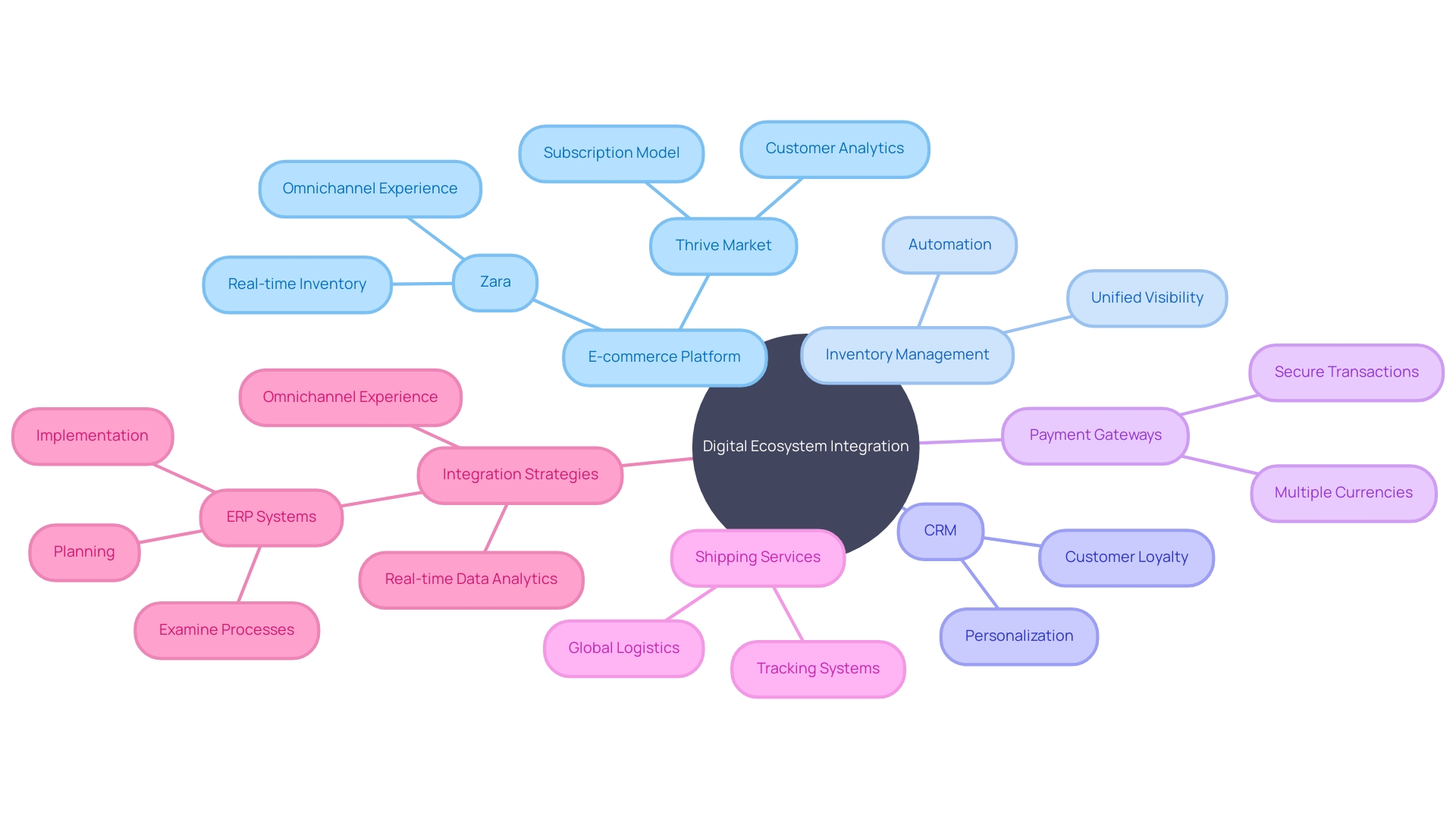
Create Key Performance Indicators (KPIs) for Online Sales
Key performance indicators (KPIs) are the navigational instruments that guide online businesses toward their objectives and success. It's not just about tracking any data, but the appropriate data, and this is where planning becomes critical. For instance, a customizable forecasting model, like the one Bamboo created for Filson, epitomizes the precision that KPIs can offer. By inputting lifetime value, acquisition cost, and advertising investments, Filson's team was able to predict their e-commerce sales for the 2023 Holiday Season with an astonishing 99.6% accuracy for one month.
When creating a KPI strategy, it's crucial to identify which indicators align with your particular objectives. For example, if your objective is to enhance customer retention, then focusing on metrics like repeat customer rates and customer lifetime value would be more pertinent than average session duration. Embracing a data-driven approach not only aids in pinpointing areas of improvement but also in formulating strategic decisions that propel business growth.
The online business environment is constantly changing, and staying ahead means utilizing KPIs to make informed decisions. With global online business expected to reach $6.3 trillion this year and account for over 20% of all retail sales by 2024, understanding and utilizing KPIs such as conversion rate, average order value, and customer acquisition cost is more crucial than ever. These metrics offer a lens through which businesses can view their performance, adapt to the rapid changes in the market, and secure a competitive advantage in the dynamic world of online retail.
Conduct Market Research and Competitor Analysis
Establishing a unique position in the fiercely competitive online business environment demands a combination of perceptive market analysis and a deep comprehension of your rivals. Delving into the specifics, primary research plays a critical role by providing fresh data directly from the source. This includes conducting surveys to capture consumer opinions, behaviors, and satisfaction levels with various products or services. Emphasizing the value of primary research, experts suggest that it uncovers information not previously gathered, offering a unique viewpoint to inform strategic decisions.
In the domain of online business, India's thriving consumer electronics industry is proof of recognizing and capitalizing on market trends. A surge in sales during the festive season, as reported by the Indian Brand Equity Foundation, underscores the importance of timing and product selection in driving growth. E-commerce giants like Flipkart and Amazon have leveraged these insights to dominate the market, with Flipkart particularly taking the lead during peak shopping times.
Moreover, the application of data analytics in e-commerce cannot be overstated. Using tools like Power BI, businesses can construct data models to analyze sales and expenses, filter data, and identify product and user metrics. This enables them to discover products frequently bought together, assess profitability, and optimize shipping costs.
Taking cue from industry leaders, it's evident that the intersection of innovation and fundamental principles is key to enduring success. Amazon's dedication to core customer values, showcased by its emphasis on selection, pricing, and delivery speed, has proven to be almost unbeatable by competitors. Likewise, integrating cutting-edge technologies like AI can additionally improve the online shopping experience, indicating that even as the industry develops, fundamental approaches stay pertinent.
On the other hand, exploratory research offers a less structured approach, ideal for new market entry or product ideas. Descriptive research then builds on these explorations to provide detailed analyses of audience demographics, behaviors, and trends.
Integrating these approaches into your online business plan can produce a wealth of valuable information. For instance, identifying high sales of washing machines in India could lead to a strategic expansion of online product lines in appliances. Likewise, acknowledging the potential of India's laptop and tablet manufacturing sector, estimated to achieve a value of USD 100 billion by 2025 according to the ICEA, can unveil fresh product classifications for online platforms.
In summary, the incorporation of market research and competitor analysis lays the foundation of a strong online business strategy. It allows companies to uncover opportunities, develop unique selling propositions, and strategically position themselves to outperform rivals. By utilizing primary and exploratory research, alongside descriptive analytics and real-world case studies, directors of online business can navigate market complexities and chart a course for sustained growth and market dominance.
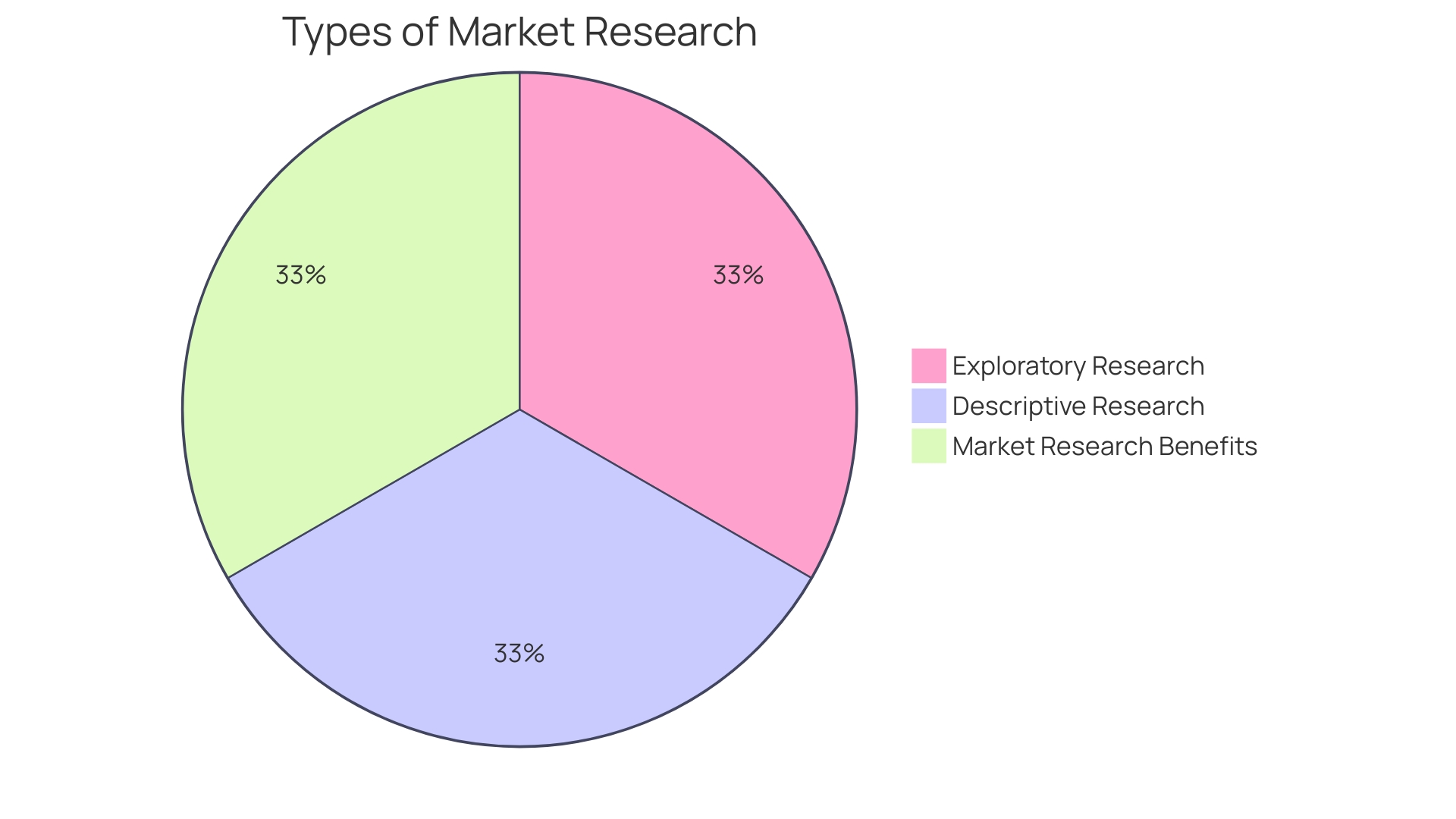
Establish Trackable Goals and Project Scope
Developing a strategy for online transactions with accuracy is similar to establishing a trustworthy compass for your journey. Begin by pinpointing your aspirations with SMART goals—specific, measurable, attainable, relevant, and time-bound targets that sync with your broader business vision. These goals are not just placeholders; they are the stepping stones to your success, each one an actionable task that propels you forward.
In the ever-changing realm of online business, the initial stage frequently determines the path of your expansion. Consider the tale of an online marketplace for independent designers. It started as a Shopify store aimed at showcasing unique talent. Yet, the real momentum came only when the founders initiated demand by purchasing and reselling items themselves. This pivot turned the initial inertia into a lesson in logistics, inventory management, and direct customer engagement.
Understanding the ebb and flow of market demand is pivotal. With tools like Google Trends and social media analytics, you can tune into the consumer pulse, adapting your offerings to the changing tides of interest. It is also essential to survey the competitive landscape, analyzing rivals' products, pricing, and marketing maneuvers to position your brand effectively.
Keeping up with online business trends is equally important. For example, despite the recent slowdown from unprecedented peaks during the pandemic, the online retail industry is poised to skyrocket, with projections estimating its global value at $6.3 trillion this year. This context underscores the importance of benchmarking your performance—track conversions, average order values, repeat customer rates, and other vital metrics on a quarterly basis to capture the accurate growth narrative of your enterprise.
Remember, your initial steps lay down the groundwork for sustained success. By combining strategic planning with an agile mindset, you are not just embracing the wave of current trends but shaping the future of your enterprise in the thriving digital marketplace.
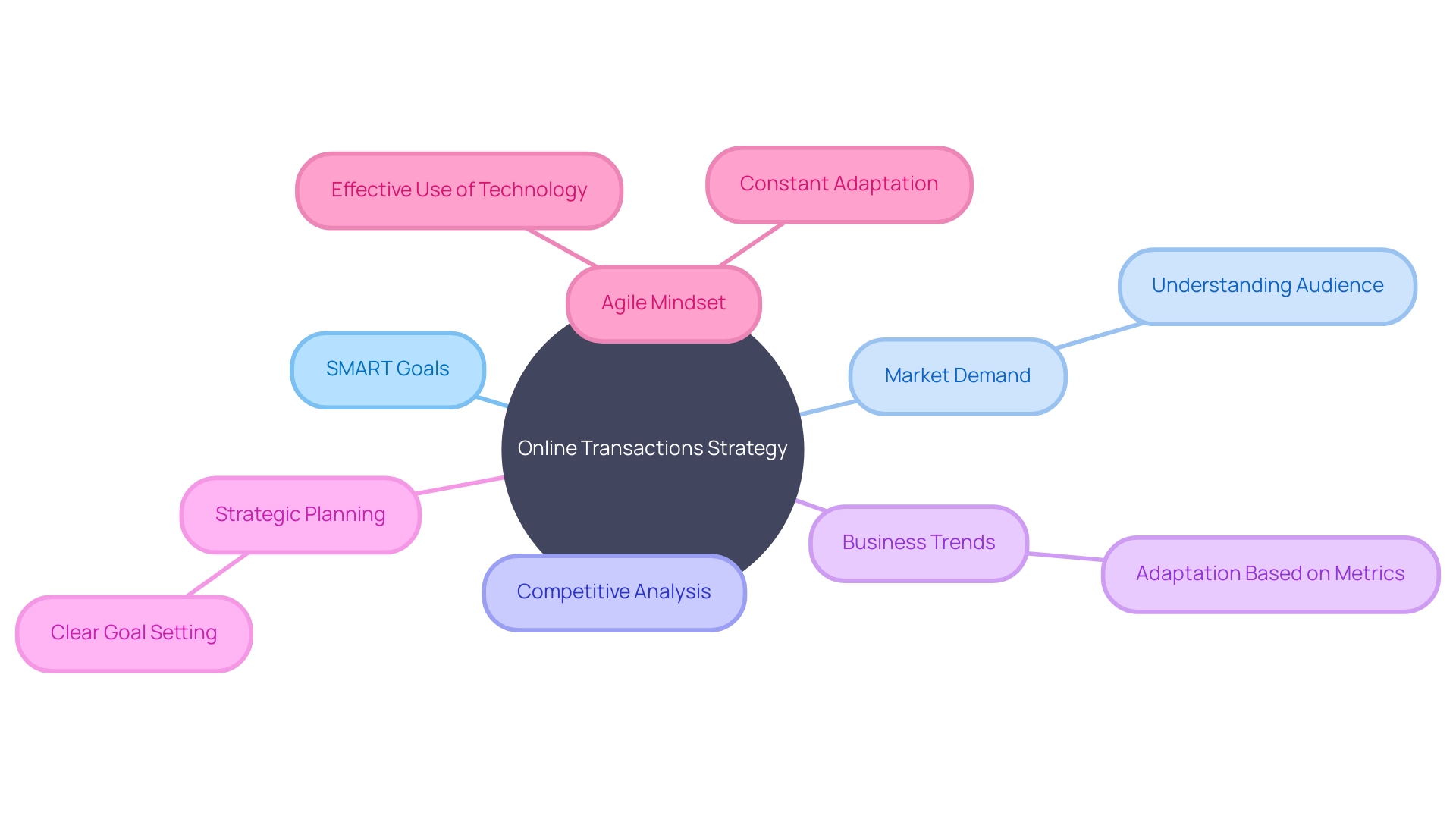
Select the Right E-commerce Tools and Platforms
Selecting the optimal e-commerce platform is akin to a craftsman choosing the right tool; it can significantly impact the efficiency and quality of your online presence. When embarking on the selection process, start with a clear understanding of your basic needs, incrementally refine your criteria, and continuously adjust based on the insights you gather. Consider Shopify for its user-friendly interface and ability to set up an online store with ease, without the need for coding skills. With its drag-and-drop functionality and customizable themes, Shopify caters to a variety of scales and types.
When considering tools for website development, payment processing, inventory management, and analytics, it's crucial to evaluate their scalability, security, and integration capabilities. For instance, Square stands out for its seamless POS integration and mobile card reading solutions, especially for businesses already using their product ecosystem. However, be aware of the complexity within its dashboard and ensure it aligns with your operational needs.
Innovative solutions like Zippin technology, which powers checkout-free stores, are reshaping the retail landscape, offering a glimpse into the future of online shopping and in-store experiences. Incorporating such technologies can greatly improve the user experience and distinguish your platform.
Keep in mind, the 'top' tools and platforms for online selling are subjective and should align with your distinct enterprise needs. As Voltaire wisely stated, 'The best is the enemy of the good,' implying that the pursuit of a perfect solution should not deter you from choosing a good one that effectively meets your needs. By carefully selecting the right combination of tools and platforms, you can streamline operations, elevate the customer experience, and accelerate growth.
Develop a Comprehensive Business Plan
Creating a strong plan is essential for the smooth implementation of your e-commerce venture. This strategic document will encapsulate your company's mission and vision, identify your target demographic, and provide an in-depth competitive analysis. Furthermore, it will detail your marketing strategies, financial forecast, and operational procedures. Think of it as the compass that guides your online enterprise, ensuring that every stakeholder is navigating in the same direction. To remain relevant in the dynamic e-commerce landscape, it's imperative to revisit and refine your business plan consistently, aligning it with evolving market trends and your overarching objectives.
Product and Service Description
Creating a captivating product description plays a crucial part in connecting with your clientele and enhancing their shopping experience. To captivate your audience, start by using storytelling to delineate the journey of your products. Introduce the 'who' - a character that your prospective buyer can relate to, then describe the 'what' - the key features and benefits of your product. Finally, explain the 'why' - how this product will enrich their lives.
A pragmatic approach is also essential. Your product descriptions should succinctly convey the value proposition to the consumer. For instance, instead of merely listing the features of a pair of running shoes, emphasize how they will enable the runner to achieve better performance.
Incorporate 'Golden Keywords' that resonate with your target audience, optimizing your content for search engines and making it easier for individuals to find what they're looking for. Remember to format your descriptions for readability, using bullet points and ample spacing to break up text and draw attention to important details.
Furthermore, incorporating endorsements from contented patrons can greatly enhance trustworthiness. Including contact information for assistance within the product description ensures that any potential queries can be promptly addressed, facilitating a smoother purchasing process.
In light of recent trends, adding a 'small business' label to your products can further attract customers who are keen on supporting local and smaller enterprises. Statistics have shown that bolstering your product pages with these strategies can lead to an improved conversion rate, moving your performance metrics from average to exceptional.
Keep in mind that a good conversion rate is contextual and varies across different industries and platforms. However, making sure that your product descriptions are informative, relatable, and customer-focused will position you better to exceed industry benchmarks and achieve greater online business success.
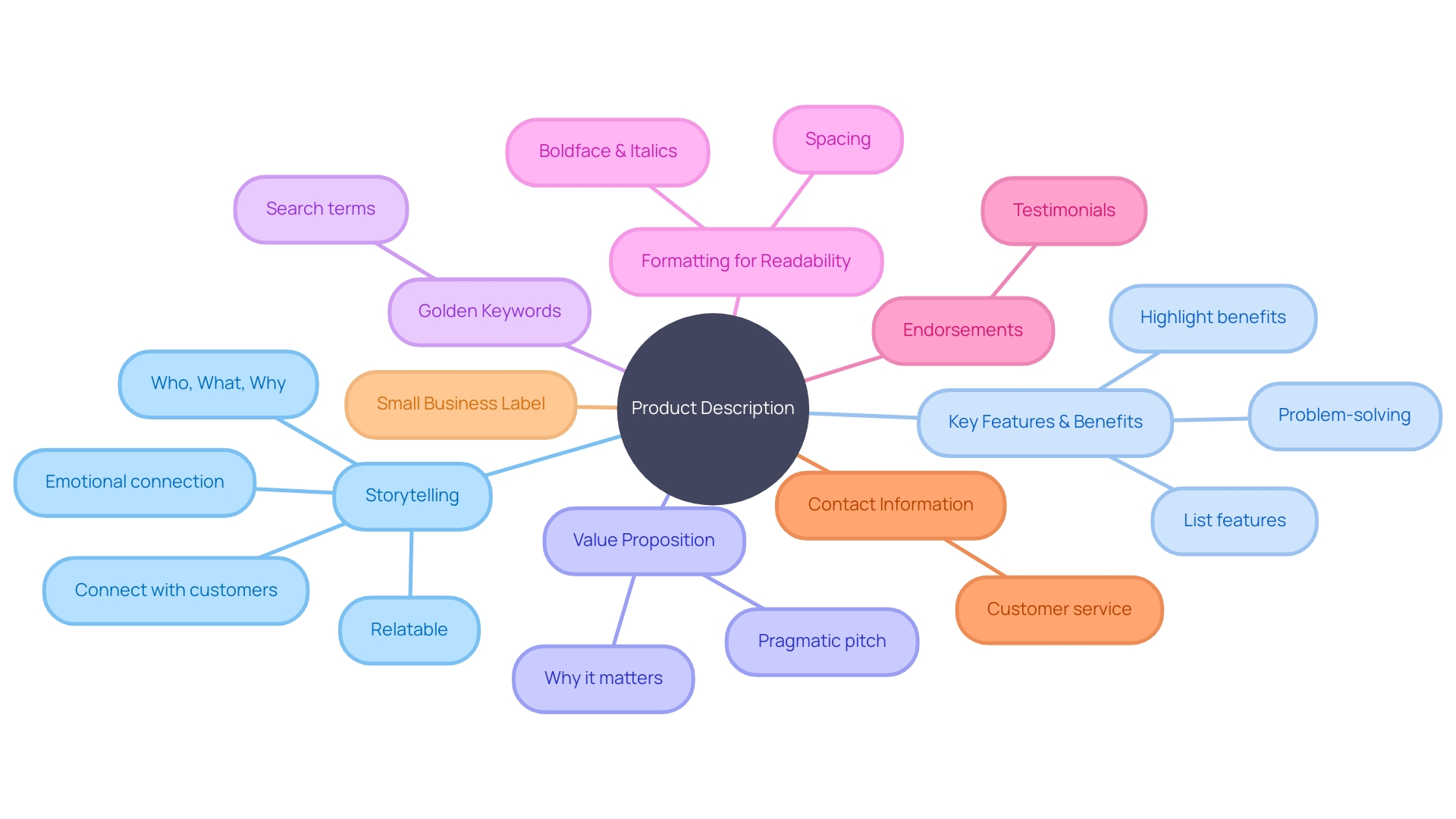
Branding and Unique Value Proposition
Establishing a distinctive brand identity and a well-defined value proposition is fundamental in differentiating your e-commerce enterprise from the competition. Consider the tale of Gothrider Coffee, which stood out from the crowd by crafting a distinctive brand narrative and utilizing product bundling to enhance the experience of its patrons. Their approach demonstrates the importance of a brand's aesthetics, such as packaging and presentation, which can imply product quality and align with the company's market position. Gothrider's success highlights that a brand is far beyond its name; it's an indication to clients about what they can anticipate from the products and services provided.
Similarly, the overall user experience on your website, the clarity of your product presentations, and a streamlined purchasing process are vital components that influence your e-commerce effectiveness. Incorporating these elements with a robust brand story can result in enhanced loyalty and sales. The goal is to craft a brand experience that resonates with your target audience at every touchpoint, from your website to social media, ensuring that your message is not just heard, but felt.
To quantify the impact of a strong brand and value proposition, consider the eCommerce market's structure, which spans multiple industries and products. In such a diverse landscape, a captivating brand narrative can be the differentiator that captures and retains interest. By emphasizing the creation of significant moments that mirror the culture and values of your brand, you can establish a feedback loop that enhances employee engagement, trust from customers, and financial sustainability, similar to the community-driven strategy of Thriftbooks, which utilizes extensive language models to incorporate consumer insights and improve recommendations.
Remember, your brand is not just about the products you sell, but also those you choose not to sell, reflecting a commitment to authenticity and quality. As you navigate the online business realm, remember that every aspect, from packaging to product names, contributes to the perception and success of your brand.
Customer Retention Strategies
In the dynamic realm of e-commerce, the focus on client retention has become a linchpin for sustainable growth. With the landscape changing rapidly, the smart implementation of retention strategies can greatly enhance repeat purchases, improving lifetime value (CLV). One powerful strategy is the implementation of personalized email marketing, which can convert the journey of the consumer into a more captivating experience. Adapting communication based on client behaviors and preferences ensures a deeper connection with your brand.
To further strengthen loyalty, introducing loyalty programs, along with exclusive perks and rewards, can serve as powerful incentives. Such initiatives connect with clients, promoting a feeling of worth and inclusion, which are vital for recurring transactions. Moreover, ensuring responsive and top-notch service to clients can swiftly address and rectify any concerns, thereby strengthening trust and satisfaction.
With Optimove reporting a surge in acquisition costs, partly due to the challenges posed by digital marketing platforms, the significance of retention becomes even more pronounced. It's essential to strike a balance between acquisition and retention efforts, given that both aspects require significant investment but serve as critical revenue streams. By focusing on retention, you not only affirm the value of existing customers but also set the stage for long-term brand loyalty and growth.
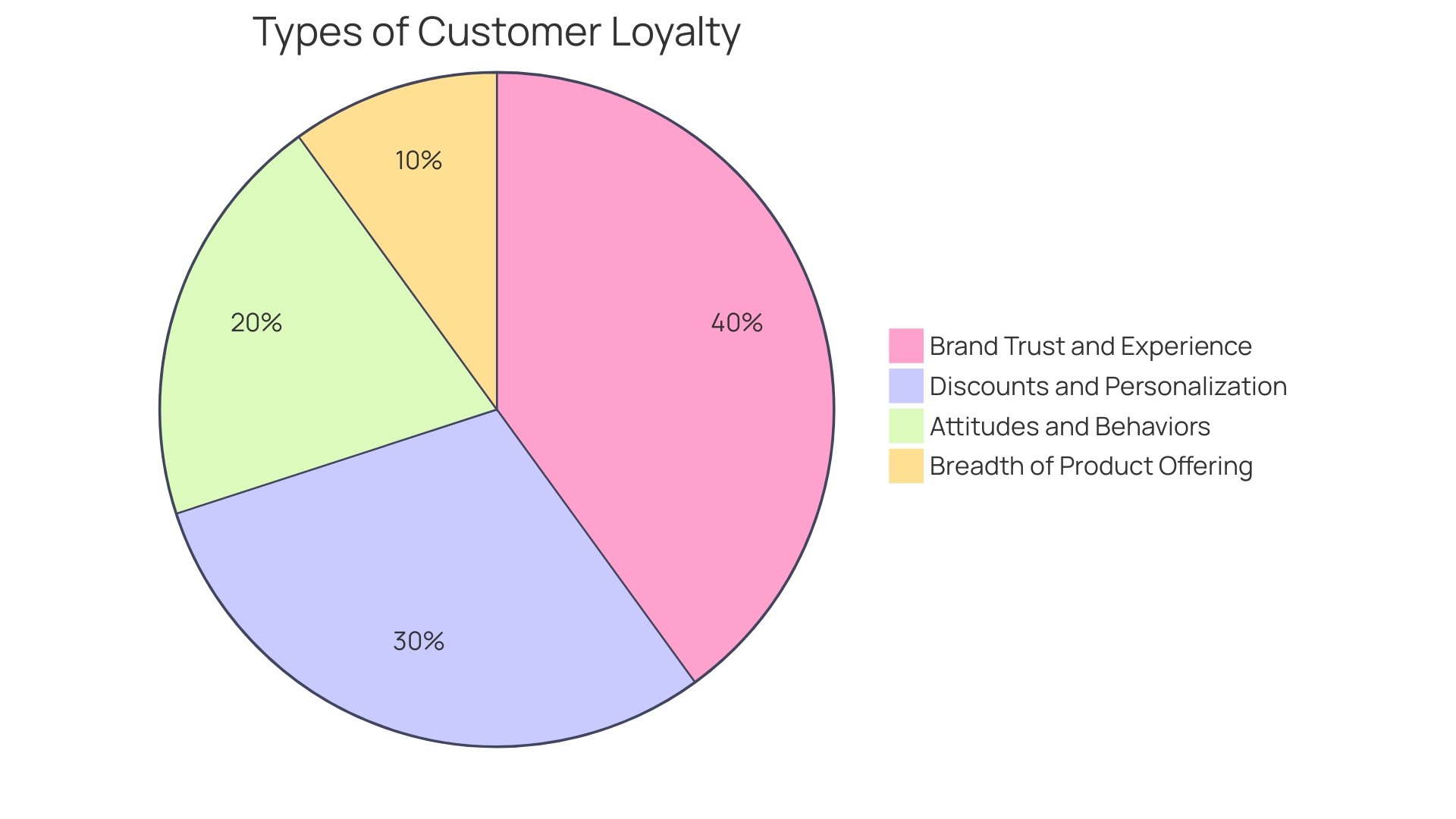
Financial Planning and Resource Allocation
Strategic financial planning and astute resource distribution are crucial in the field, as exemplified by the success stories of innovative companies like Gothrider Coffee and Chess.com. By meticulously preparing financial forecasts inclusive of revenue expectations and cost assessments, along with ROI computations, these enterprises have set benchmarks for e-commerce prosperity. They demonstrate the significance of allocating resources efficiently across various operational aspects, such as marketing, technology, inventory, and service to clients. Chess.com's strategic infrastructure investments to accommodate millions of users signify the essence of scalability and stability in technology resources. Similarly, Gothrider Coffee's unique bundling approach underscores the value of marketing ingenuity and product uniqueness, catering to niche market segments. The integration of state-of-the-art checkout-free technology in retail, as observed in Dublin's Zippin-powered store, further highlights the importance of investment in innovation for an improved consumer experience. To emulate such success, a continuous evaluation of financial performance is crucial, utilizing data to refine resource allocation, ensuring seamless operations, and boosting profitability. These practical instances clearly illustrate the influence of well-coordinated financial planning and resource management on the growth and contentment of online business.
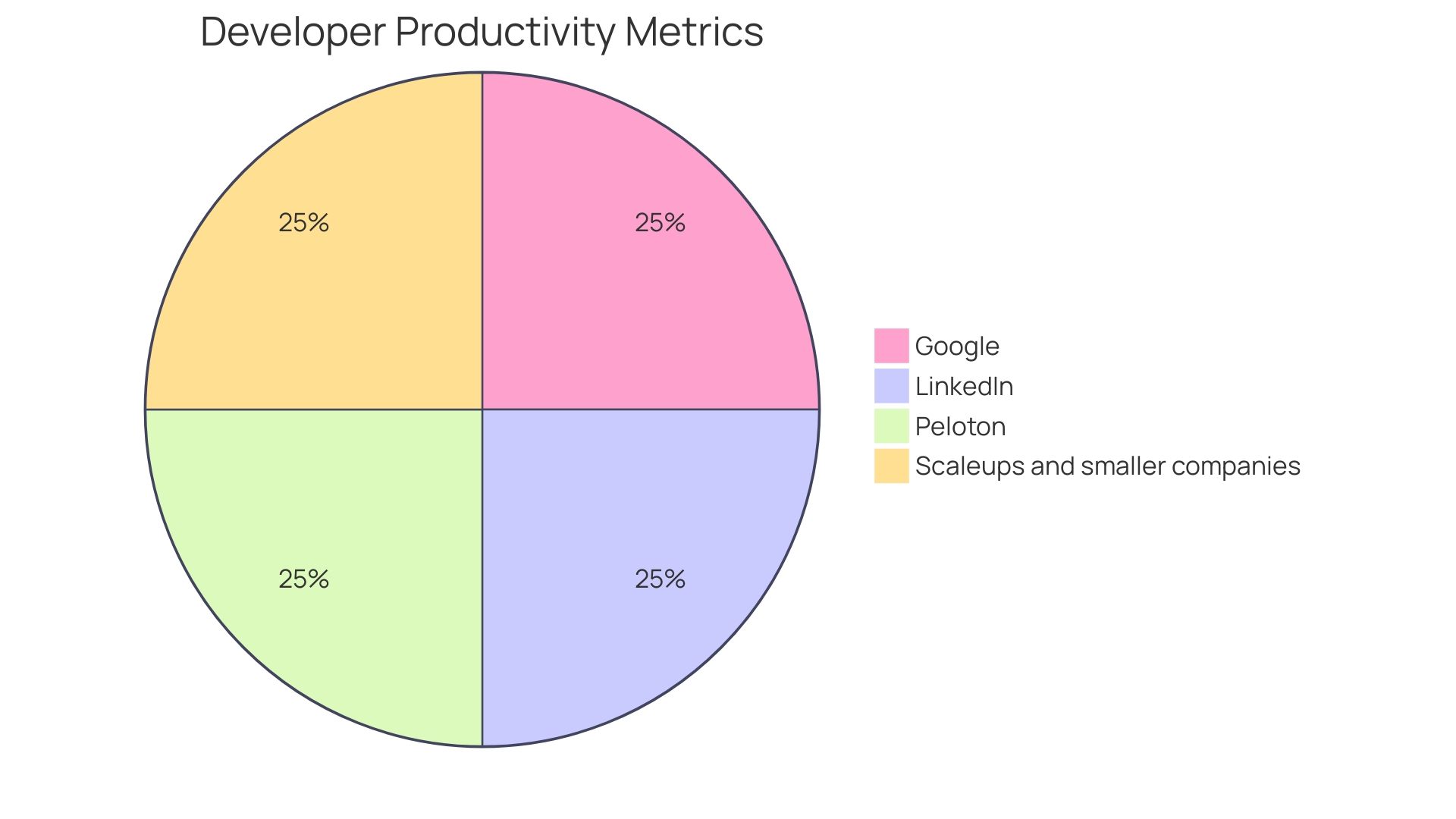
Operational Efficiency and Logistics
To succeed in the competitive business environment, operational efficiency and logistics are not just supporting elements; they are crucial to the success of your strategy. By utilizing technology, businesses can optimize their operations, accurately control inventory levels to prevent stockouts or overstocking, and establish effective shipping and delivery processes to ensure a smooth experience for consumers.
Take Europris, Norway's leading discount chain, which embarked on an ambitious automation journey leading to the consolidation of six warehouses into one state-of-the-art automated logistics center. The project, executed in three phases, has dramatically increased their operational efficiency, setting a benchmark for the industry.
Similarly, the electric vehicle company Rivian, with a keen eye on sustainability and efficiency, has adopted a goal of net-zero emissions by 2040. This dedication extends to streamlining processes across their worldwide operations, showcasing the significance of operational efficiency in modern online business.
Moreover, advancements in technology have transformed logistics from a traditionally labor-intensive process to one that is more streamlined, reducing errors and increasing speed. As a testament to the ever-evolving industry standards, checkout-free stores, like the one recently introduced in Dublin Airport, offer a glimpse into the future of retail logistics, where technology like Zippin enables a hassle-free shopping experience.
In the words of industry leaders, technology has not just transformed e-commerce logistics; it has set the stage for intense competition where client expectations for quick and accurate deliveries are at an all-time high. To cater to a broader client base and guarantee your position at the pinnacle, contemplate incorporating technological solutions that enhance route planning. These systems can evaluate business constraints and find the most cost-efficient delivery routes, consistently outperforming human planners.
Finally, data analytics plays a crucial role. By analyzing your operational data, you can identify bottlenecks and areas for improvement. This focus on detail in your operations can result in improved satisfaction, reduced costs, and a strong competitive advantage.
Continuous Improvements and Adaptation
To thrive in the dynamic world of e-commerce, constant enhancement and flexibility are key. Drawing insights from feedback and market trends allows for strategic improvements. Data science plays a pivotal role by unraveling consumer behaviors, preferences, and buying habits. A prominent European fashion and lifestyle platform showcases this by automating product image descriptions and advanced tagging to enhance user experience and search results, illustrating the effectiveness of innovative solutions in handling vast product catalogs.
Optimizing your online presence through A/B testing of website design, product information, and marketing initiatives is essential. Moreover, the integration of cutting-edge technologies like artificial intelligence and gamification not only fosters innovation but also heightens customer engagement. As the online retail industry continues to change, with trends indicating a combination of in-person and digital ('phygital') shopping experiences, companies must adjust to be everywhere and focused on the customer. The implementation of such approaches guarantees continuous expansion and a strong competitive advantage.
Implementing and Executing the E-commerce Strategy
For businesses focused on online retail success, the implementation of artificial intelligence technology, as demonstrated in Zara's innovative approach, serves as a model for success. Zara has incorporated AI throughout its operations, from supply chain management to client engagement. This extensive use of AI, including RFID tagging and real-time analytics, has given Zara the agility to respond to market trends with remarkable speed, often delivering new designs within a week. Imitating this, business strategies should concentrate on breaking down goals into attainable tasks, with a sharp focus on utilizing technology for immediate analysis and inventory management.
Bamboo's growth insights service, working with Filson, demonstrated the power of a customizable forecasting model that integrates insights such as customer lifetime value and acquisition costs. Applying such a model could predict online sales with stunning accuracy, as seen with Filson's nearly perfect forecast alignment during the 2023 Holiday Season. This precision in forecasting is a testament to the importance of data-driven decision-making.
Moreover, the retail industry is buzzing with innovations like Zippin's checkout-free technology, which has revolutionized shopping experiences at Dublin Airport. This progress highlights the potential of seamless trade, providing a glimpse into the future where online business approaches might develop.
To capitalize on the current momentum in online business, companies should consider these advancements and insights. By integrating AI and predictive analytics into their operations, businesses can not only optimize their supply chain but also enhance customer experiences, ultimately fostering growth and maintaining a competitive edge in the fast-evolving digital marketplace.
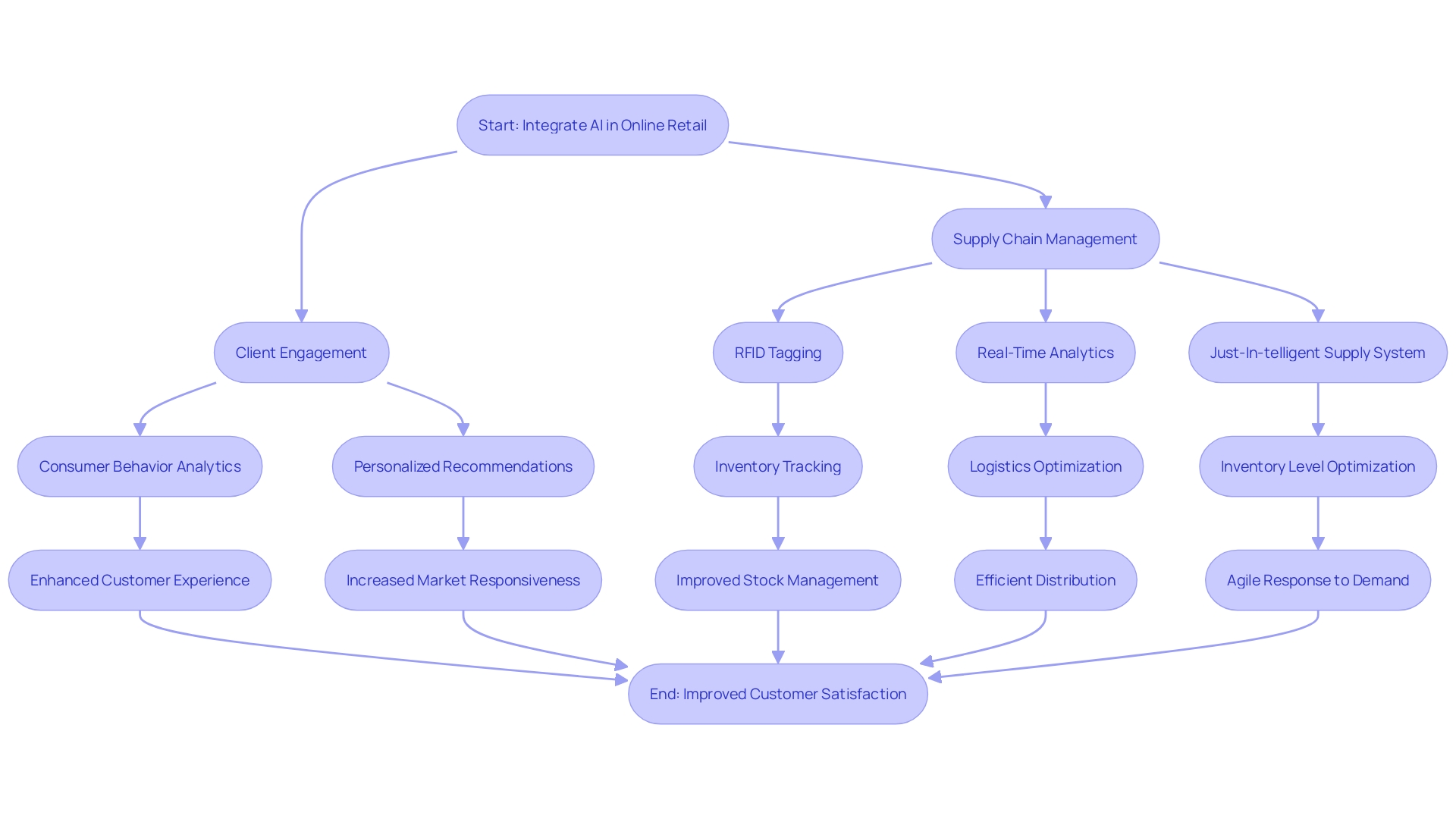
Monitoring and Evaluating Performance
To leverage the transformative power of online business, it's crucial to thoroughly examine and evaluate your online strategies. With the e-commerce market expected to reach a staggering $6.3 trillion globally this year, and projections indicating that over 20% of all retail sales will be conducted online by 2024, the importance of regular performance analysis cannot be overstated. Monitoring sales, website traffic, satisfaction of clients, and effectiveness of marketing campaigns through key performance indicators (KPIs) is a critical step in comprehending and optimizing your digital storefront.
Analytics tools and detailed reports are invaluable for delving into the nuances of customer interactions, pinpointing conversion rates, and calculating return on investment (ROI). Companies like Spotify and Chess.com are prime examples of enterprises leveraging digital platforms to expand their reach and engagement, with Spotify seeing heightened engagement through their introduction of video podcasts, and Chess.com experiencing growth by fostering a robust global community around the game of chess.
Regularly scheduled performance reviews are crucial for identifying potential enhancements and building upon the strengths of your online business efforts. By keeping a pulse on both the micro and macro trends within the industry, and refraining from solely comparing to the anomalous growth periods such as those seen during 2020 and 2021, businesses can maintain a clear and current understanding of their standing in a rapidly evolving digital marketplace.
As the landscape of online business continues to shift with emerging technologies like artificial intelligence, which personalizes shopping experiences, staying attuned to these changes is crucial. By evaluating your e-commerce performance consistently, you'll be able to pinpoint both strengths and weaknesses, unlocking opportunities for growth and ensuring that your strategy is continuously refined to stay ahead in the competitive online arena.
Conclusion
Crafting a successful e-commerce strategy requires careful planning and execution. By defining goals, conducting market research, and allocating resources effectively, you can position your online business for sustained growth and a competitive edge. Aligning marketing and sales strategies, understanding your target customers, and creating a customer service plan enhance the overall customer experience.
Investing in the right technology, integrating systems, and developing key performance indicators (KPIs) enable data-driven decision-making and optimization. By staying attuned to industry trends and continuously adapting, you can maintain relevance and competitiveness in the ever-evolving e-commerce landscape.
Monitoring and evaluating performance through KPIs and analytics tools allows for continuous refinement and optimization. By staying informed on industry insights and evaluating your e-commerce performance consistently, you can unlock opportunities for growth and maintain a competitive edge.
Incorporating strategies such as developing a comprehensive business plan, crafting engaging product descriptions, and establishing a distinctive brand identity helps differentiate your business in the competitive e-commerce landscape. Implementing customer retention strategies, focusing on financial planning and resource allocation, and optimizing operational efficiency and logistics drive sustainable growth.
By following these strategies and staying informed on industry insights, you can navigate the ever-evolving landscape of e-commerce and propel your online business to new heights. With careful planning, strategic execution, and continuous improvement, your e-commerce venture can thrive in the bustling digital marketplace.





